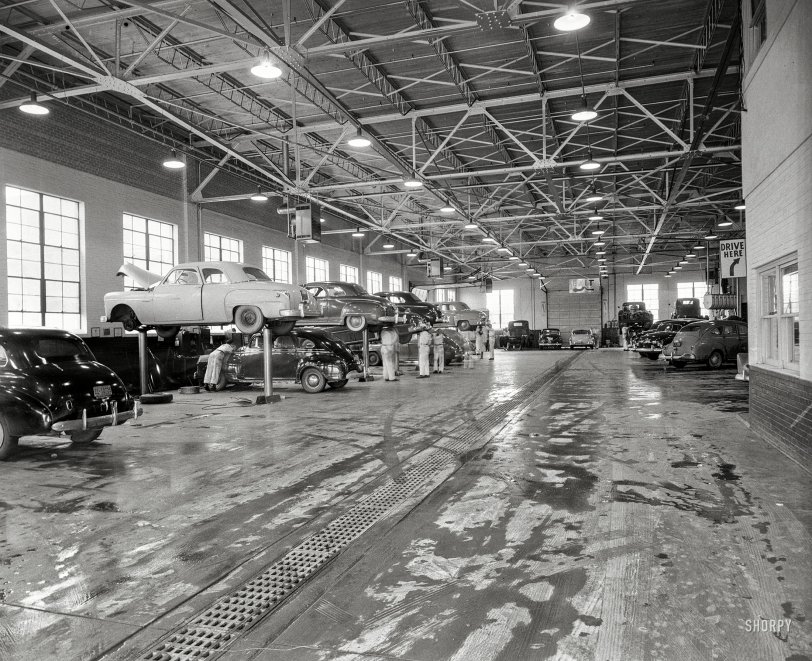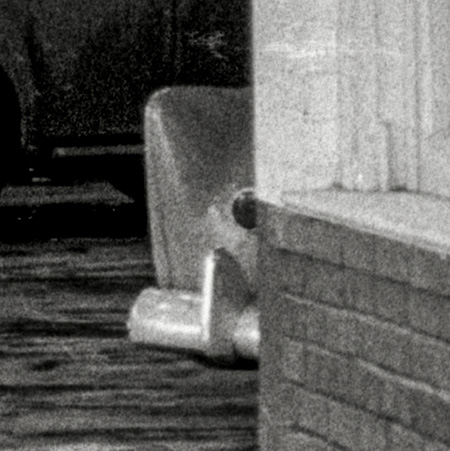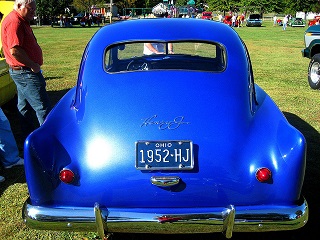


Framed or unframed, desk size to sofa size, printed by us in Arizona and Alabama since 2007. Explore now.
Shorpy is funded by you. Patreon contributors get an ad-free experience.
Learn more.

- Details, Details
- What's that building to the left of the tower?
- Coal Barges
- Bromo-Seltzer
- Inner harbor
- The Basin
- What a headache!
- Giant stepladder?
- Baldwin 62303
- Baldwin VO-1000
- Cold
- No expense spared
- Tough Guys
- Lost in Toyland
- And without gloves
- If I were a blindfolded time traveler
- Smoke Consumer Also Cooks
- Oh that stove!
- Possibly still there?
- What?!?
- $100 Reward
- Freeze Frame
- Texas Flyer wanted
- Just a Year Too Soon
- WWII -- Replacing men with women at the railroad crossing.
- Yes, Icing
- You kids drive me nuts!
- NOT An Easy Job
- I wonder
- Just add window boxes
Print Emporium
Pope Garage: 1952

Columbus, Georgia. "John A. Pope Motor Co. garage, 1952." Service for your Mopar. 4x5 acetate negative from the News Archive. View full size.
"Jno A. Pope" memories
My dad bought a brand new 1969 Mercury Montego MX Station Wagon with the fake wood trim from John A. Pope. We had that car for 15 years and put over 100,000 miles on it, so I remember this garage area very well. I and my wife owned a new 1988 5.O liter Mustang that I took here to get serviced as well.
One interesting note; the metal plates on the back of his cars read "Jno A. Pope". Dad always asked the service manager why the funky spelling, but he always got a different answer. The most common reason was that they were delivered in error, but Mr. Pope liked the conversation-starter potential of the plates and so he ordered them that way from then on.
[The genealogists among us will recognize "Jno." as the old-school abbreviation for John. - Dave]
Two post lift
The shop where I work has two of these lifts, long retired and living underground never to be disturbed. The front cylinder is mounted on rollers, and rolls forward and backward to engage the lower control arms. The rear cylinder is stationary, and by moving a lever, the rear can be lifted by either the rear axle or the rear tires. These cylinders are independently controlled, so the rear could be raised and lowered like the tilted car with the 3 mechanics at the rear bumper.
Many years ago the hydraulic hose to the front cylinder ruptured, causing the front of the car to plummet to the floor while the rear of the car was in the air. Trying to get the car down was an ordeal, since there was a problem with loss of hydraulic fluid which affected the rear cylinder as well. The poor car was jumping up and down in the front and rear while the boss tried to keep the spastic dance to a minimum.
It is easy to see why these lifts are no longer made. They can be death traps, only relying on fluid pressure to keep them up. No safety locks were thought to be necessary.
1952 Seems Correct - But - What's That?
As a kid I was always around cars at an early age with my dad and an uncle both in the car business and owning their own dealerships and/or car lots. So this certainly looks chronologically correct. That is, until I saw what appears to be a tailfin peeking around the office or parts department corner. Mopars didn't have their first tailfins until the Virgil Exner designed '56 models. What gives?
Wait-a-minute! After getting over my "brain fart" I now realize that the tailfins in question undoubtedly belong to a '51 or '52 Henry J or a '52 Allstate.
BTW - I still own a '41 Plymouth similar to the one right behind the mysterious tailfin.


























On Shorpy:
Today’s Top 5